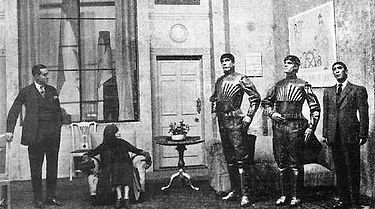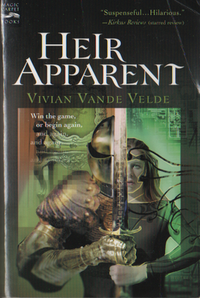It's amazing how many technological advances and ideas have come from science fiction. Science fiction writers have a duty to create cool new futuristic pieces of technology and concepts. Whether it be the internet, cell phones, or a new way to interact with computers, the ideas created by these authors have often shown up in the real world years later a,not just fantasy, but reality.
The opposite can be true as well: actual pieces of technology that have been developed and created in the real world have been capitalized by fiction authors. These authors write stories revolving around one particular technological advance, whether it be a completely computerized reality or using a real device in fictional circumstances, these authors know how to monopolize on concepts that culture thinks is cool and new.
The following 10 ideas show just some examples of how literature has affected reality and how reality has affected literature.
(1) Literature --> Reality: The Internet
Years before the internet was ever invented, David Brin, science fiction author, wrote the novel "Earth." In it, he describes a futuristic world where there is an interconnected computer network. Hmm, sounds kind of like the internet? You bet, its name is even the World Wide Web. But it gets better: it describes the web as the source for all news media, and predicts e-mail spamming and blogging. The best part, though? This line (emphasis added): "These are my subvocalizations, I suppose – the twitterings of data and opinions on the Net are my subjective world."
(2) Reality --> Literature: A Second Virtual Life
http://www.youtube.com/watch?v=Ik2_61longI
James Dasner has taken the idea of a complete virtual life and run with it. Last class we talked a bit about Second Life, a complete virtual world. Dashner takes this idea further and paints for us a picture in which "coffins" are used to put the person in a completely immerseive experience. The "coffin" causes all your physical senses to experience what you're doing in the virtual world. Rainy day? Yep, you can feel raindrops landing on you. Cold outside? Yep, you can feel that too. You can explore any real world location you want, as well as may not real ones. So, kind of like Second Life, only a lot better.
(3) Literature --> Reality: Robots

Do you know where we got the term "robot" from? If you said a work of science fiction, you'd be right. The word "robot' was first coined in Karel Capek's play R.U.R., which stands for Rossum's Universal Robots. The term 'robot' was used to denote the automata in the 1921 play.
(4) Reality --> Literature: Nanobots

Who wouldn't want to write a book about a swarm of super intelligent, microscopic killer robots? Or read a book about them? Michael Crichton, master at science, has written just that. This is a good example of how writers can take the popular ideas of science that are floating around in their day, and write a best-selling novel about that scientific idea. Other novels by Crichton that follow this same idea are Jurassic Park, which deals with cloning, and The Andromeda Strain, which deals with rapidly mutating viruses.
(5) Literature --> Reality: Cell-phones
http://mashable.com/2011/09/08/star-trek-gadgets/
Okay Trekkies, this one's for you. In the Star Trek show, the crew are often seen using small little pieces in their ears to communicate with one another. This idea eventually led to the formation of cellular phones, or cell-phones for short. Not only did the devices in Star Trek communicate with each other though, they could also do lots of other crazy things like warn the wearer of impending danger. Unfortuanlly, our cell-phones can't do that quite yet.
(6) Reality --> Literature: Complete Video Game Immersion

This idea is very similar to the "coffin" idea Dashner writes about, as mentioned in #2 of this post. Here, though, the idea isn't a free interactive world which is similar to real life. The idea here is to have just another video game, only make that as real as blooming possible. In Heir Apparent, Velde picks up on the idea of video games becoming more and more realistic, and proposes that in the future, all video games will be entirely immerseive. When you fight dragons, you can literally feel their fiery breath. I wonder how that would work for Mario games...
(7) Literature --> Reality: Holograms
(8) Reality <--> Literature: The Search for Extra-Terrestrial Life
(9) Literature --> Reality: Gesture based computer interaction
(10) Reality --> Literature: Anti-matter device


No comments:
Post a Comment